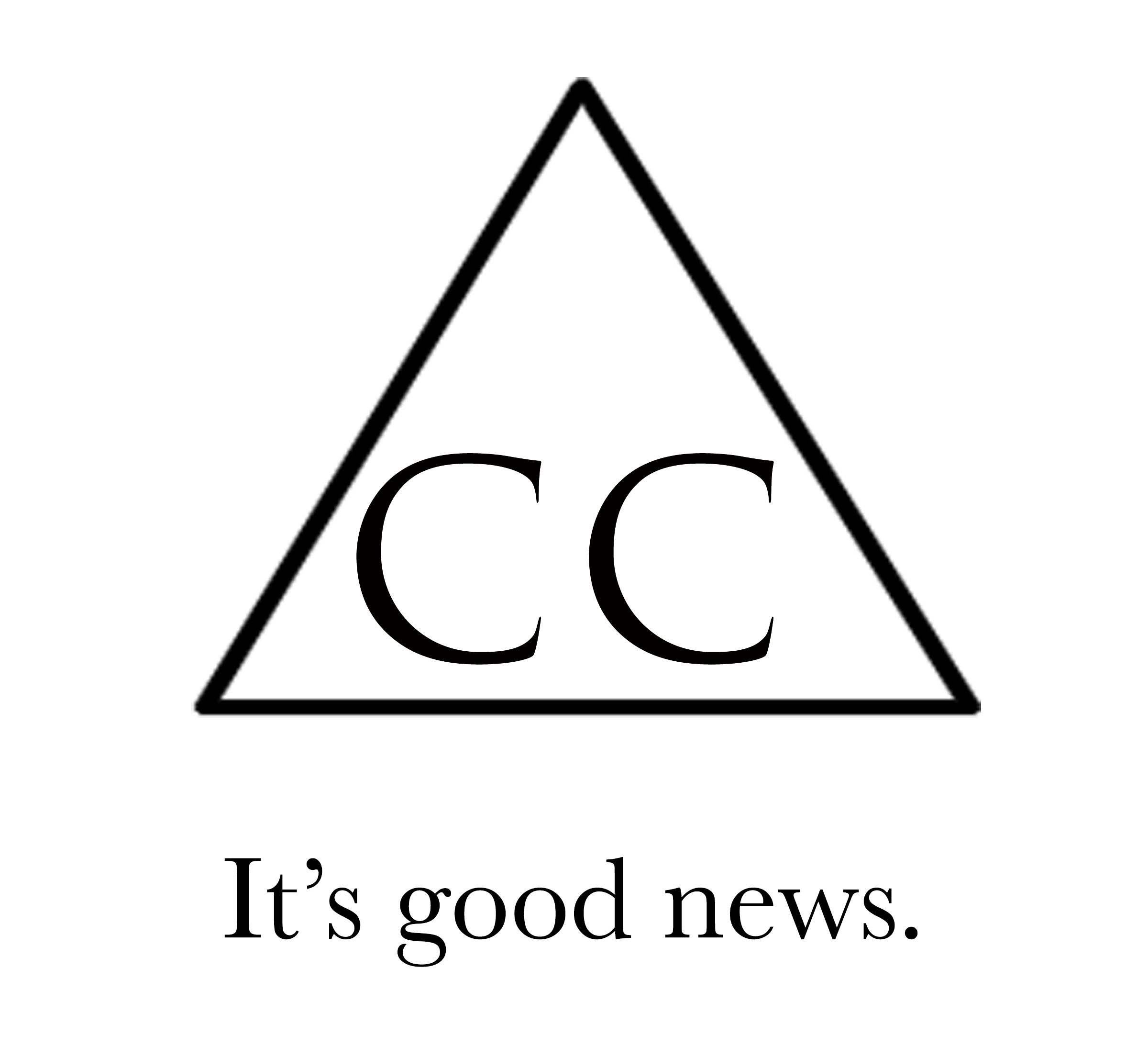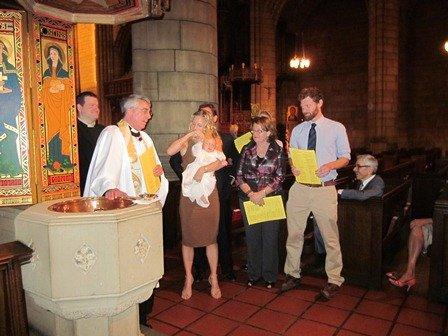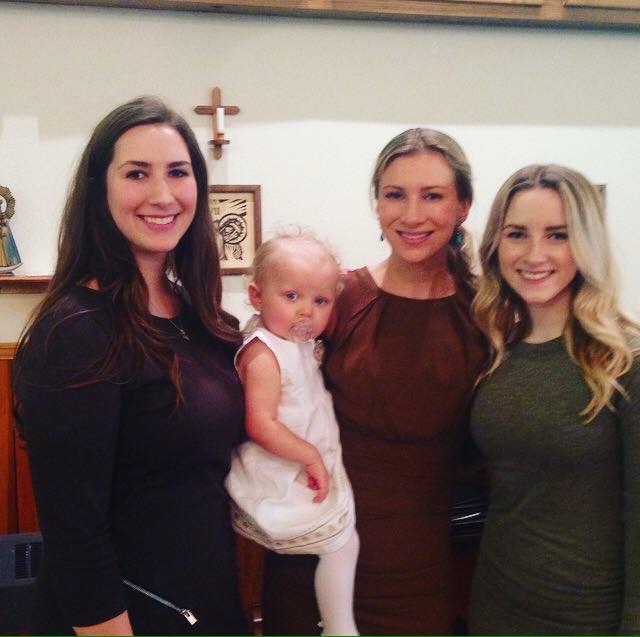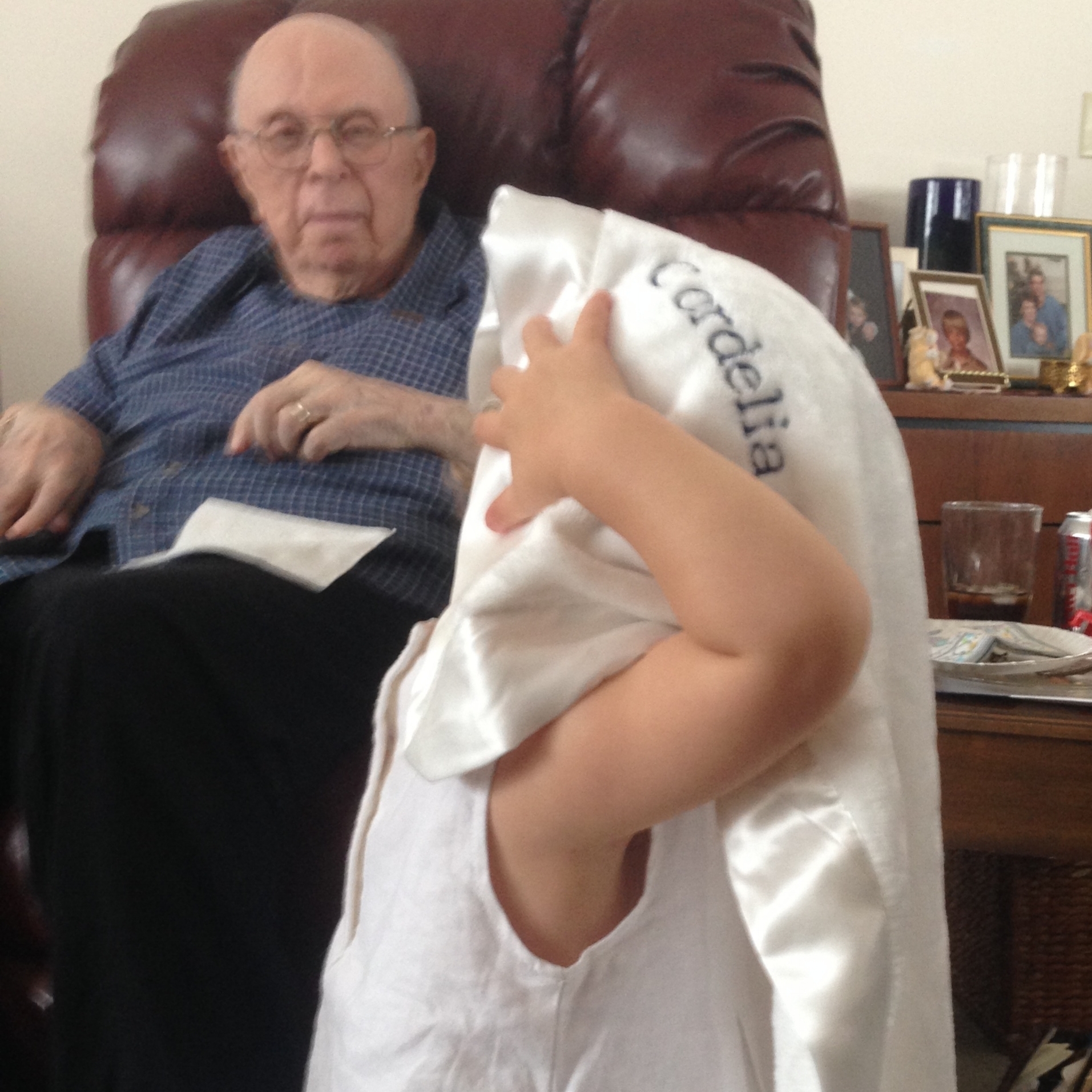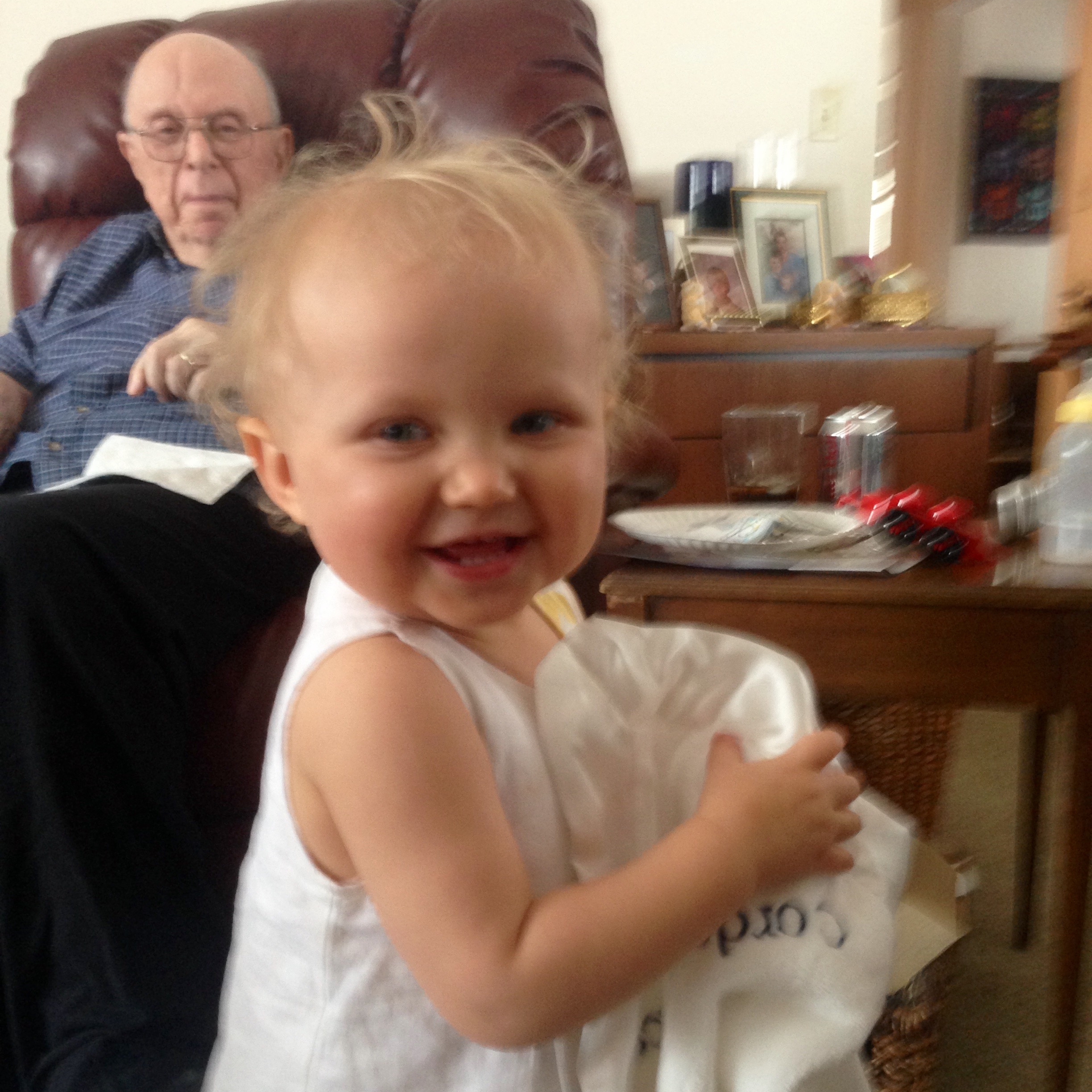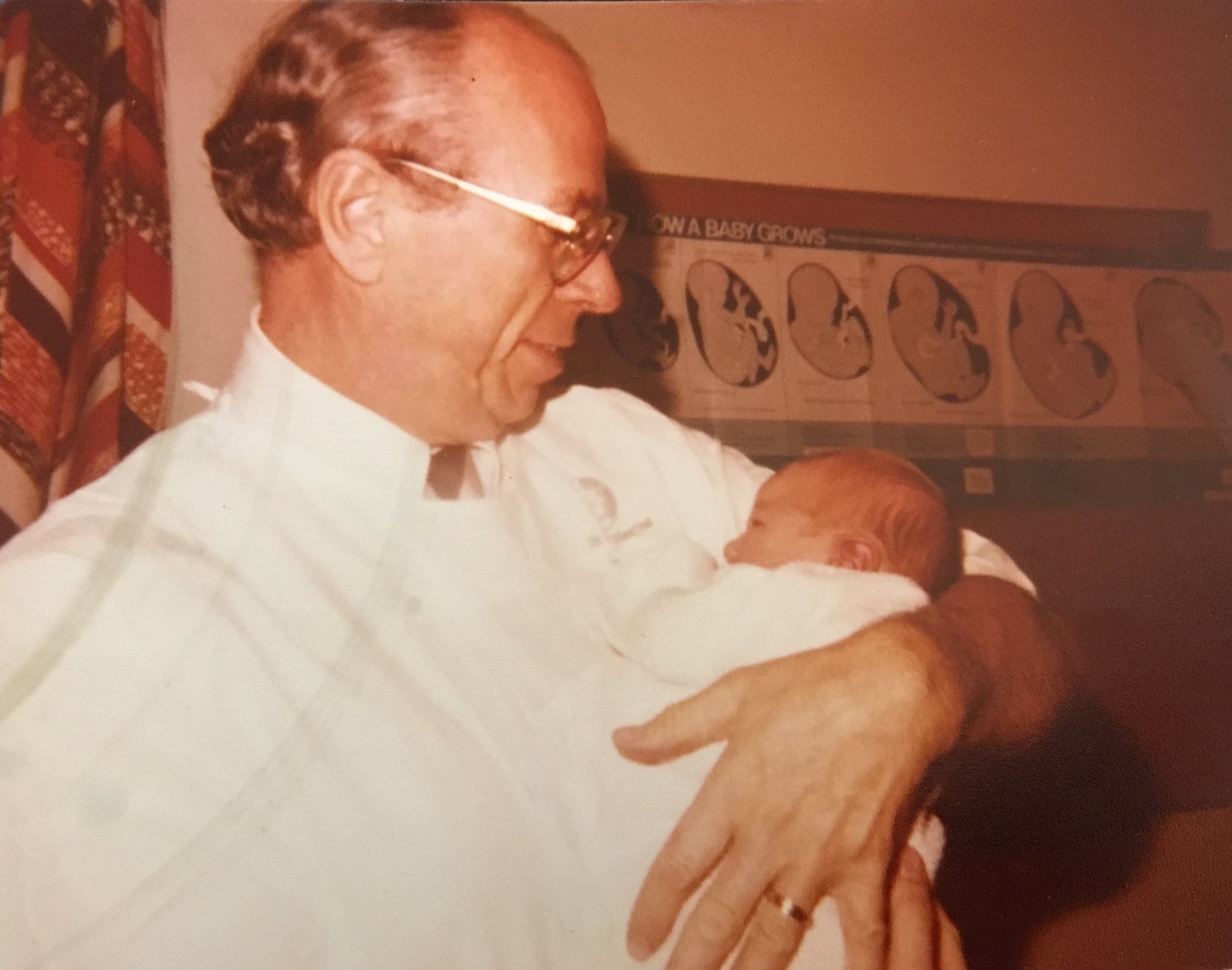THE THEATRE OF CHURCH
The Irene D. and William R. Miller in memory of John Scott at Saint Thomas Church Fifth Avenue, one of the most important instruments in North America. Photo: Ira Lippke
On October 7th Saint Thomas Church Fifth Avenue dedicated a new $11 million dollar organ, thirteen years in the making, with its maiden recital before a sold-out house of God. The Miller-Scott Organ is named for principal donors Irene D. and William R. Miller, and its mastermind John Scott, the late Organist and Director of Music of Saint Thomas from 2004-2015. One of the world's most celebrated church musicians, Scott was the driving force behind Saint Thomas's organ campaign until his untimely death at age 57 on August 12, 2015.
It was a privilege to witness Scott's successor, Daniel Hyde, take his seat at the king of instruments for its official opening night. Videographed live onto an immense screen, he hung over us like an ancient-modern musical god. The video was a bold move, distracting at times from the music yet providing an awesome glimpse the organist’s mastery and his colossal machine: 7000 pipes, four keyboards, and a floor pedalboard à la F.A.O. Schwartz, all being played by a single human being. For the event, Hyde curated a program that would showcase the organ's versatility and tell the story of an instrument designed to fulfill the complex needs of both performers and parishioners. For this lay musician, the Star Spangled Banner, in Concert Variations, OP. 23 by Dudley Buck, was an emotional high point that asserted the grandeur of Saint Thomas on the American ecclesiastical scene and marked the occasion with fitting drama.
Bret and I were married at Saint Thomas in 2007 with my grandparents in attendance. Jeremy Bruns, Associate Organist from 2004-2007, played my march from Suite for Trumpet and Organ by H. Purcell (1659-95).
For Bret and me, the event was a homecoming after years of absentia we'll blame on the kids. But in our first New York chapter, when I moved here from Santa Fe in 2004 to our wedding two-and-a-half years later, we would tear out of our apartment on 51st Street to make the eleven o’clock at Saint Thomas. Admittedly, we were and are not “religious.” First-generation New Yorkers in search of culture and community, the formality of someplace to be and dress for on Sunday morning was appealing (as was the boozy “coffee hour” that would have shocked the Keds off parishioners in my hometown). My grandfather proudly transferred my membership from St. Alban's in the industrial port town of Superior, Wisconsin, to Saint Thomas Church Fifth Avenue, one of America's most prominent Episcopal homes and its leader in Anglican church music.
My agnostic love of Episcopalianism started young. The traditional architecture and efforts of St. Alban's provided my first introduction to theatre or ritual of any kind. From age three or four, my earliest memories include watching—and reaching for—my grandma as she processed with the choir, the curious thrill of breaking the fourth wall between pew and aisle to take communion, the consciousness of being watched, of partaking in the play. The pleasures of memorizing lines, of performing a routine, of the glory of speaking and singing in unison with others, were planted for me in the Episcopal Church.
I even remember thinking our chainsmoking baritone priest, Father Jensen, was God himself. Whenever he looked down to address me, I stammered and quaked. The cigarette hanging from his huge mustache made for an unlikely god, but he had the voice. No one seemed to notice how nervous he made me, nor how seriously I took church. This confused reverence pinnacled at my dear aunt’s wedding, in which I was “cast” as Flower Girl, an honor the importance of which may explain the intensity on my face.
Left to right: my aunt’s best friend Lynn, her big sister (my mommy), my beloved Auntie Ellen, me at age 5, my Uncle Dan and his two brothers, Robert and David Pioro.
Years later in high school, long after being dutifully Confirmed and getting out of churchgoing, my Theology teacher at the Marshall School showed us Shadowlands, the movie based on William Nicholson's play. Anthony Hopkins as C.S. Lewis connected my American Episcopal Church to its lofty Anglican roots, sparking a lifelong love of Britain and its English. Art, the church, and my grandparents became interconnected in me and this feeling reached its height on my first visit to Westminster Abbey and Poet’s Corner, where literary heroes the likes of Chaucer and Dickens are buried along with, most importantly, Laurence Olivier (my first romantic love). I later visited Canterbury Cathedral, the seat of the Church of England, and St. Lawrence's in the Cotswolds where, my first Christmas away from home, I sobbed at twenty years of memories invoked by the liturgy, terrified something would happen to my grandparents the year I was abroad. To this day the Book of Common Prayer, the official text of Anglican worship, brings me closer to my grandparents than anything else.
Baptized Catholic, at a young age my grandmother chose to begin attending the Episcopal Church in her then hometown of San Francisco. She always said she simply preferred the service, what I’d call a classy but audience-participatory musical theatrical experience that culminates in The Liturgy of the Eucharist. A play within a play, the Liturgy gives weekly churchgoers a chance to partake in high theatre such as few occasions in modern life. While the music and speak-singing add to the thrill, the words stand alone. Take this opening call and response:
Priest: The Lord be with you.
People: And with thy spirit.
Priest: Lift up your hearts.
People: We lift them up unto the Lord.
Priest: Let us give thanks unto our Lord God.
People: It is meet and right so to do.
Then the Priest speeds up and sings (hopefully well):
It is meet, right, and our bounden duty, that we should at all times, and in all places, give thanks unto thee, O Lord, holy Father, almighty, everlasting God. Through Jesus Christ our great High Priest; in whom we are build up as living stones of a holy temple, that we might offer before thee a sacrifice of praise and prayer which is holy and pleasing in thy sight.
Therefore with Angels and Archangels, and with all the company of heaven, we laud and magnify thy glorious Name; evermore praising thee, and saying...
“Lift up your hearts!” “Angels and Archangels!!” “All the company of heaven!!!” These words have sent chills down my spine all my life. They taught me that “meet” can mean “proper,” how pretty it is to say “evermore” instead of just plain “forever.” The choir goes on to sing a couple brief, high-impact pieces (the Sanctus and Benedictus), the Priest gives a quick backstory of the Eucharist (Christ was betrayed and sacrificed), and asks God to accept our symbolic sacrifice of thanksgiving and praise (the bit where we take the wafer with a sip of wine). We sing the Lord’s Prayer, complete communion while the choir sings the Agnus Dei, and finish with a big thank you to God that holds some of my favorite language:
Almighty and everliving God, we most heartily thank thee for that thou dost feed us, in these holy mysteries, with the spiritual food of the most precious Body and Blood of thy Son our Savior Jesus Christ; and dost assure us thereby of thy favor and goodness towards us; and that we are very members incorporate in the mystical body of thy Son, the blessed company of all faithful people; and are also heirs, through hope, of thy everlasting kingdom. And we humbly beseech thee, O heavenly Father, so to assist us with thy grace, that we may continue in that holy fellowship, and do all such good works as thou hast prepared for us to walk in; through Jesus Christ our Lord, to whom, with thee and the Holy Ghost, be all honor and glory, world without end. Amen.
Who wouldn’t want to be an “heir through hope”?! Those are words to sustain a person. At an early age the language of the church gave me an ear for grandiloquence, an understanding of metaphor, and a love of speaking and singing with others.
To get married at Saint Thomas was a cultural honor. My grandfather read from this section of George Eliot's Adam Bede, actress Carrie Heitman read Auden's “O Tell Me The Truth About Love” and Reverend Father Mead gave a fabulous homily on three Greek words for love: Eros, Filia, and Agape. Words we have engraved inside our rings, they were a welcome secular alternative to scripture that had our orthodox Jewish friends, including one very loyal groomsman, squirming on Sabbath. We put them through it again three and a half years later at William's baptism.
William being baptized at three months by Reverend Andy Mead and his godparents, the incomparable Margaret Csencsitz (Bret’s beloved stepmother) and Super Uncle John Trask.
Eager to hear the new organ with Saint Thomas’s world-famous choir of men and boys, I returned with William the following Sunday. Cordelia obliged by being dropped off in the well-appointed nursery, the very room where I’d put on my wedding dress, and I dragged William to a good pew, pointing out where we’d had his baptism on the way. After nearly choking on the first round of incense, he mustered his focus and got through all but the sermon without fidgeting half to death. (I’ll forgive him for whispering dryly upon a slew of “Jesus Christs,” “They swear a lot.”)
The sermon was given by the visiting Reverend Canon Andrew Piper, Precentor of Hereford Cathedral, and centered on the importance of music to the Anglican tradition. I thought he was guilty of preaching to the choir until he spoke about organ maintenance costs putting church music programs in jeopardy, making Saint Thomas’s new instrument all the more vital to the musical future of the Episcopal Church. World-class music or not, I have always been a sucker for a good sermon, to my mind something liberal arts-heavy, dogma-light. For an example of a sermon exactly to my taste, and a good think about New York, read 2010’s “Human Longing” by Victor Austin, Theologian in Residence from 2004-2012, and fellow “Johnnie.”
After service we picked up a happy Cordelia and swung by the bookshop to follow up on my email about stocking Grandpa’s book. We used the "secret bathroom” and exited onto 53rd Street through the parish entrance. As we stepped into the incense-free air, William exaggerated, “I can’t believe I survived that.” We started up Fifth Avenue in the direction of my offices at Trish McEvoy, another longtime home away from home, and I inhaled gratitude for community. For having places where people know your name. For places where you know the secret spots, where major life events have taken place that you can visit again. For having words and music that take you back home, to England, to your grandparents.
Cordelia with her godmothers, my beloved cousins Sarah and Bethany Pioro. We brought her baptism home to Grandpa on Easter 2016 at St. Alban’s in Wisconsin.
“Where’s Cordelia?” with Grandpa looking on. It was his last Easter.
“Here she is!”
Grandpa meeting me at the hospital in 1979.
